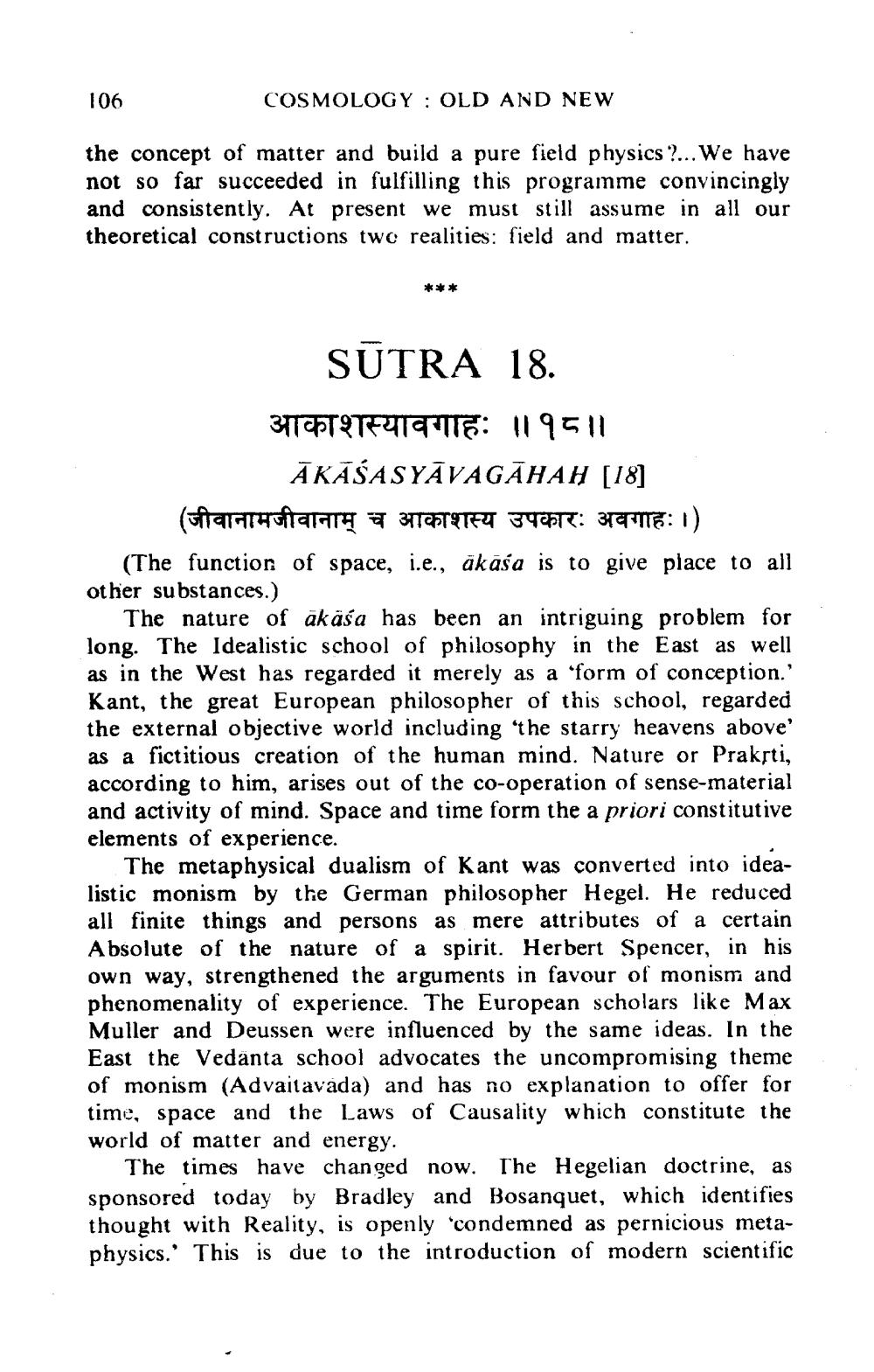________________
106
COSMOLOGY : OLD AND NEW
the concept of matter and build a pure field physics ?... We have not so far succeeded in fulfilling this programme convincingly and consistently. At present we must still assume in all our theoretical constructions twe realities: field and matter.
***
SUTRA 18. 311 CATTRYCKIE: 119511
ĀKĀSASYĀVAGĀHAH [18] (starihtalama 3TOTSTEU 34are: 3TTE: 1) (The function of space, i.e., äkāśa is to give place to all other substances.)
The nature of äkäsa has been an intriguing problem for long. The Idealistic school of philosophy in the East as well as in the West has regarded it merely as a 'form of conception.' Kant, the great European philosopher of this school, regarded the external objective world including the starry heavens above' as a fictitious creation of the human mind. Nature or Prakrti, according to him, arises out of the co-operation of sense-material and activity of mind. Space and time form the a priori constitut elements of experience.
The metaphysical dualism of Kant was converted into idealistic monism by the German philosopher Hegel. He reduced all finite things and persons as mere attributes of a certa Absolute of the nature of a spirit. Herbert Spencer, in his own way, strengthened the arguments in favour of monism and phenomenality of experience. The European scholars like Max Muller and Deussen were influenced by the same ideas. In the East the Vedanta school advocates the uncompromising theme of monism (Advaitavada) and has no explanation to offer for time, space and the Laws of Causality which constitute the world of matter and energy.
The times have changed now. The Hegelian doctrine, as sponsored today by Bradley and Bosanquet, which identifies thought with Reality, is openly "condemned as pernicious metaphysics.' This is due to the introduction of modern scientific




